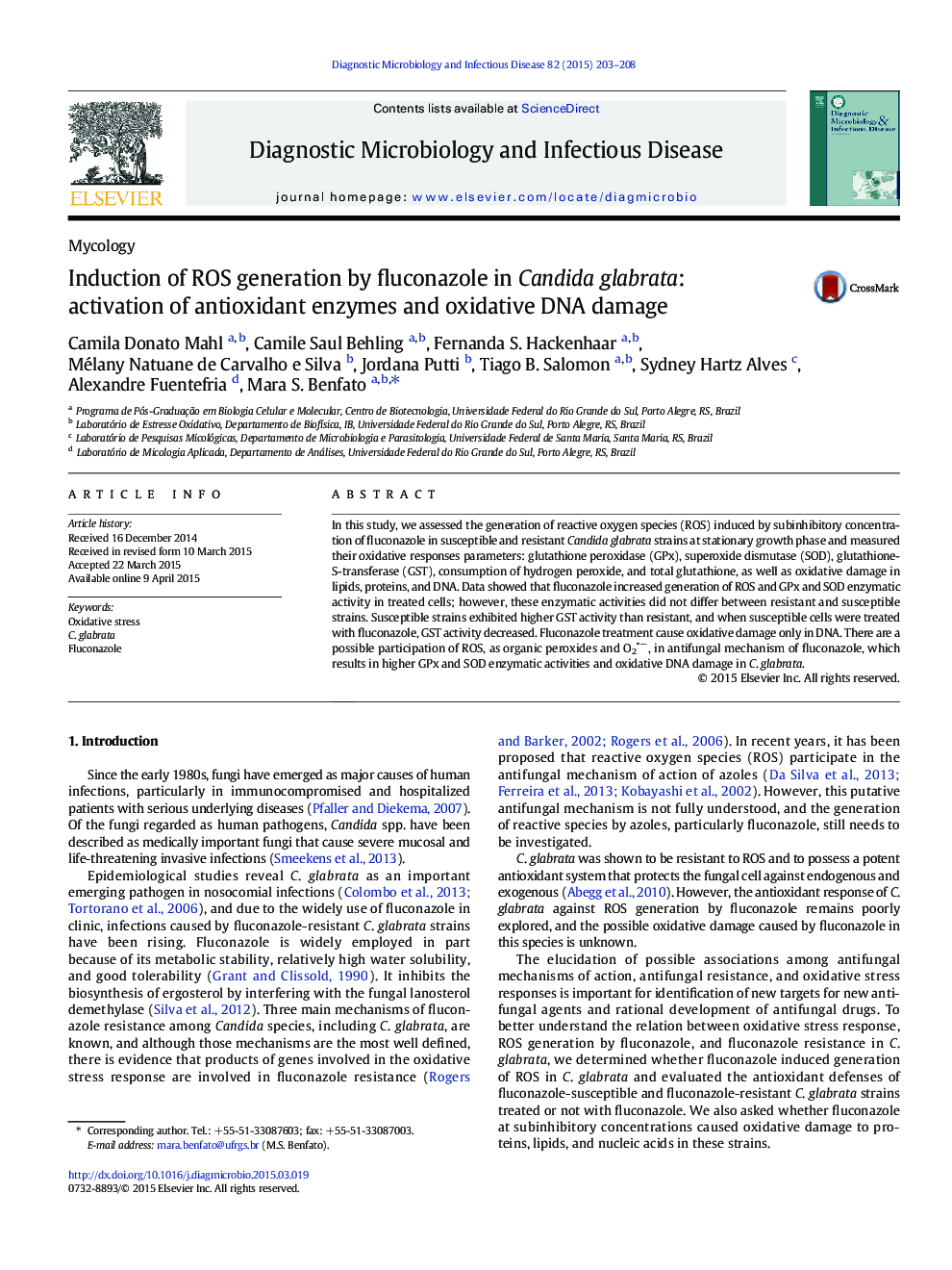| Article ID | Journal | Published Year | Pages | File Type |
|---|---|---|---|---|
| 3346867 | Diagnostic Microbiology and Infectious Disease | 2015 | 6 Pages |
•Fluconazole generates ROS in C. glabrata and increases activity of SOD and GPx.•ROS generation by the azole does not differ in susceptible and resistant strains.•Oxidative stress response does not differ in susceptible and resistant strains.•Fluconazole induces oxidative damage in DNA of C. glabrata.•Oxidative damage in proteins and lipids of C. glabrata was not observed.
In this study, we assessed the generation of reactive oxygen species (ROS) induced by subinhibitory concentration of fluconazole in susceptible and resistant Candida glabrata strains at stationary growth phase and measured their oxidative responses parameters: glutathione peroxidase (GPx), superoxide dismutase (SOD), glutathione-S-transferase (GST), consumption of hydrogen peroxide, and total glutathione, as well as oxidative damage in lipids, proteins, and DNA. Data showed that fluconazole increased generation of ROS and GPx and SOD enzymatic activity in treated cells; however, these enzymatic activities did not differ between resistant and susceptible strains. Susceptible strains exhibited higher GST activity than resistant, and when susceptible cells were treated with fluconazole, GST activity decreased. Fluconazole treatment cause oxidative damage only in DNA. There are a possible participation of ROS, as organic peroxides and O2•−, in antifungal mechanism of fluconazole, which results in higher GPx and SOD enzymatic activities and oxidative DNA damage in C. glabrata.
